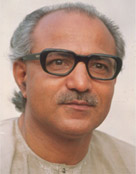Jain Temples of Punjab
For centuries together, the Jains of Punjab have been the followers of the Jain saints who keep their mouth covered with a piece of cloth (mukhpatti) and thus attached to the “Dhoondhak Mat”. This sect of Jain religion, which is also known as “Dhoodhia sampradaya”, was established by Lonka Shah as a protest against the then prevalent idolatory among the ‘Shwetambaras’ with the result that the ‘sthanakas’ came into existence and the monks started living there instead of the temples.
In the ‘sthanakas’, “Aagams’ (scriptures) and not the idols are kept. The Shwetambaras do not consider some twelve out of forty- five scriptures worth reading since these preach idolatory. It is hard to say since when the Jains of Punjab embraced the ritual of image worship, but this can be affirmed that we do not find any evidence of image worship among the Jains till the end of the 19th century.
Acharya Srimad Vijyananda Suri, popularly known as Muni Atma Nand or Atmaramji, who became the pioneer of idol worship in Punjab, was born on Chait 1, Vikram Sambat 1892 at Lehra. He joined the Dhoondak band of Jain saints but afterwards, disillusioned with the Sthanaka-life, he turned an idol worshipper. He left Punjab and went to Agra where he became a disciple of Muni Buddhi Vijay, an advocate of idol worship. Muni Atma Nand was a brilliant monk, a powerful orator and a prolific writer. His popularity rose sky high and in Sambat 1931, the whole of the Indian idol-worshipping Jain community conferred upon him the title of Acharya. This brought the entire lot of idol-worshipping monks under his command. He loved his Punjab so dearly that after attaining the title of Acharya, he traveled on foot from Gujrat to Punjab and persuaded his disciples to build temples. Almost all the Jain temples were built in his life time and the idols shifted from the temples of Gujrat and Rajasthan were installed in these temples by the Acharya himself.
Malerkotla was the first town to have a temple. In Vikram Sambat 1947, the idol of Tirathankara Rishabh Nath was installed in the temple at Malerkotla.The Acharya had a special feeling for this town since it was at Malerkotla where he embraced a monk’s life. The Dhoondhakas opposed this movement of idol-worshipping tooth and nail. The Dhoondhakas exhibited their might by stopping the idol- worshippers from taking out the ‘Dhwaja’ (religious flag) in the shape of a procession, which is now an annual feature with them. The use of force by them created tension in the town and a complaint was lodged with the ruler of the Malerkotla State. The Muslim ruler, Ahmed Ali Khan, in order to avoid his personal involvement, got the services of a British magistrate from Ludhiana who, after a couple of hearings, held that the idol-worshippers had every right to take out the Dhwaja. This victory was celebrated at many places in Punjab which resulted in the demoralization of the Dhoondhakas.
In Vikram Sambat 1948, another temple was built at Amritsar, with the idol of Tirathankara Sheetal Nath. On the occasion of idol installation a very latge congregation was addressed by the Acharya. The local followers arranged a community lunch. On Baisakh 5, Sambat 1948, another idol of Tirathanka Ari Nath was installed there. The temple at Amritsar was built by Phaggu Mal and Panna Lal, two rich business men of the town.
Another temple was built at Zira the same year. Radha Bai, a rich widow of Zira vowed to spend all her money in the building of the temple. She invited the local Jain community and expressed her desire which was received with a big applause. She entrusted this job to Lalu Ram, who engaged Sher Singh, a renowned mason of the area. This 30 feet high temple has a golden ‘Samosaran’ in it and its walls are decorated with cut-glass work. When the construction work was completed, Radha Bai invited Mr. Gokal Chand from Baroda who, at the instance of the Acharya, brought with him the idols of Tirathankara Chintamani which were places there.
Hoshiarpur, too, got a temple in Vikram Sambat 1948. The temple was built by Gujjar Mal on the pattern of the Golden Temple of Amritsar. This temple has four pillars and its central dome is covered with gold plates. Pishori Mal and two of his sons, Nathu Mal and Fattu Mal, arranged a big congregation and community lunch on Magh 5, 1948 V.S.. when the idol of Tirathankara Paras Nath was laced in the temple.
In Sambat 1952, another temple was built at Ambala which became the place of worship with the placing of Tirathankara Sheetal Nath’s idol. Waziri Mal, Shadi Ram, Jagat Ram, Panna Lal and Hem Raj looked after the construction work and then arranged the congregation. The next year, Sambat 1953, three towns - Hem Nagar, Sankhatra and Narowal (now in Pakistan) - got such temples. Afterwards, temples were built at other places in Punjab such as Jalandhar, Ropar and Ludhiana.
The way the idols are worshipped in these temples is known as ‘Ashta prakari pooja’ (the eight-fold worship). The Jains bathe the idols, mark them with sandalwood paste, offer flowers, burn incense before them, and place a lighted earthern lamp or burning candle,and offer rice, cooked food and fruit to the idols. Normally, the devout visit these temples bare-footed and covering their bodies with a single piece of cloth.
 Dr. Naresh
Dr. Naresh